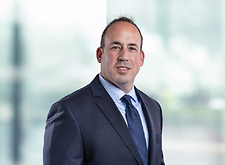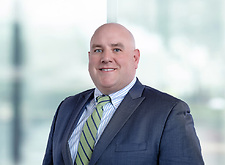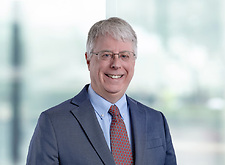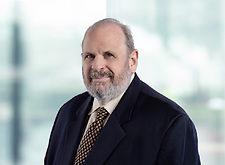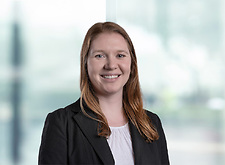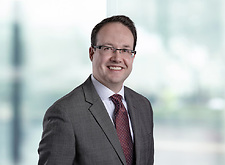Aimed at Improving Fairness in Cost Allocation and Reducing Barriers to New Renewable Generation, the Public Service Commission Approves a New Interconnection Cost-Sharing Mechanism
Introduction
Interconnection costs can be a significant barrier to implementation of New York’s aggressive climate change goals. Under existing rules, the first developer necessitating the upgrade had to bear the full cost, with only potential reimbursement from future projects to relieve that burden. This rendered many projects un-financeable. In response, and building on the work of the multiple stakeholder Interconnection Policy Working Group (“IPWG”), the New York Public Service Commission (“PSC” or “Commission”) has adopted a new cost-sharing methodology. Although this new mechanism—covering new distributed generators and energy storage systems of 5 MW or less—should reduce upfront costs for renewable generation projects, individual cost allocations will need to be carefully reviewed to ensure utilities are acting fairly.
The PSC issued a final order (“Final Order”) approving the Cost-Sharing 2.0 Proposal (“Proposal”), with certain modifications, presented by the IPWG in its petition and supplemental filings submitted on October 29, 2020 and January 19, 2021, respectively. The IPWG—consisting of the Joint Utilities (“JU”), renewable energy associations, developers, and financiers—petitioned the PSC to amend the New York State Standardized Interconnection Requirements (“SIR”), by replacing the rules on interconnection cost-sharing promulgated by the January 2017 Queue Interconnection Management Plan and Cost Allocation Order (“Original Rules”). On March 18, 2021, the PSC issued an order authorizing eligible interconnection applications be kept in the queue while the PSC finalized its response to the petition (“Interim Order”). Then, on July 15, 2021, the PSC approved the Proposal, with some modifications as detailed below. Pursuant to the Final Order, the JU will have 90 days to file amendments to the SIR reflecting the newly approved cost-sharing mechanism.
The Proposal
In its Proposal, the IPWG sought to change the “first mover” requirement, which was the basis of the cost-sharing mechanism under the Original Rules. As mentioned above, under the Original Rules, the first interconnecting project requiring system modifications (i.e., "Triggering Project") funded the full cost of the upgrade. Although the Triggering Project developer may have received reimbursement of these costs later from additional projects that interconnected and benefitted from the system modifications, the IPWG developed a more equitable cost-sharing mechanism with its Proposal. The new mechanism uses a pro rata approach wherein a project will only pay for the portion of distribution hosting capacity it is assigned. This equitable allocation will also provide more certainty to developers and financiers regarding cost obligations for upgrades.
The Proposal will apply to both utility-initiated and market-initiated distribution system modifications (“UI Upgrades” and “MI Upgrades,” respectively). UI Upgrades would include 3V0 installations as well as modifications to planning installations and replacements of substation transformer banks that are part of the utility’s Capital Investment Plan (“CIP”)—also known as Multi-Value Distribution projects (“MVD Projects[1]”). As pointed out by the IPWG, the new mechanism will increase hosting capacity and provide a more cost-effective approach to doing so, as the growth of distributed solar capacity will be coordinated with pre-planned improvements and asset maintenance. For these MVD Projects, the utility will be responsible for any in-kind replacements and the projects applying to interconnect and benefitting from the upgrades (i.e., “Participating Projects”) would pay their pro rata share based on the project size and the cost difference between the in-kind replacement and the upgrade. As part of this process, the JU will list on their system data portals the substations scheduled for major upgrades as well as the estimated cost of additional interconnections. Any pending interconnection applications would be incorporated into this process, and once the utility receives all applications, it will determine the cost per kilowatt for the upgrade and decide whether to move forward with the modification based on pro rata payments received. The 3V0 projects, however, are proactive and the new mechanism provides the utility with discretion to make upgrades at certain substations. The utility would provide developers with advance notice and developers, if interested, would submit interconnection applications pursuant to the SIR process.
MI Upgrades (i.e., “Qualifying Upgrades”)[2] will be identified by the utility as the need arises by proposed projects that require capacity upgrades to interconnect in the absence of utility-planned capital improvements. However, pursuant to the Proposal, cost-sharing for these upgrades will be capped at $250,000. Meaning, modifications below this threshold will be borne fully by the Triggering Project. The Proposal provides two different approaches for allocating cost shares for Qualifying Upgrades. For most substation-level upgrades, the utility would prepare an overall cost estimate and provide the developers in the interconnection queue with their projected payment obligation. Under this pro rata approach, the Triggering Project and the following projects in the interconnection queue that will benefit from the upgrade (i.e., "Sharing Projects") would be responsible for the specific distribution hosting capacity representing their specific portions of the Qualifying Upgrade. These applicants would make the respective payments before interconnection. Alternatively, for upgrades to distribution lines, sub-transmission lines, and underground secondary networks, the Triggering Project would be responsible for the full cost of the upgrade. However, Sharing Projects will be required to reimburse the Triggering Project if they use the added capacity within five years of the Triggering Project’s date of interconnection.
The PSC deemed the $250,000 cost threshold appropriate as it was included in the Original Rules and remains suitable under the Proposal. However, Ecogy Energy (“Ecogy”), Bright Power, UGE USA Inc. (“UGE”), and the City of New York stated in their comments that the threshold should be lowered to $50,000 and that the Proposal threshold acts as a bar to project development in New York City. The PSC ultimately concluded there was not enough information on the record for it to determine whether such a bar exists. Instead, the PSC directed ConEd, within 90 days of issuance of the Final Order, to consult with developers and Department of Public Service (“DPS”) Staff to file a proposal for adjustment to the threshold for New York City-based projects or provide a reasoned argument for retaining the threshold as stated in the Proposal.
Lastly, the IPWG outlined the applicability of the Proposal to certain interconnection applications. The Proposal will apply to interconnection applications that are either in the Coordinated Electric System Interconnection Review (“CESIR”) process or have not yet advanced to this process. For applications that have completed the CESIR process, the developer may request an evaluation to determine applicability of the Proposal, regardless of whether the initial 25 percent interconnection payment has yet been made. Finally, the Proposal will not apply to projects that have completed the CESIR process and remitted the full interconnection payment.
Potential Impacts of the Proposal
The IPWG recognized several impacts that may occur from implementation of the Proposal, such as generation of unrecovered costs—i.e., costs not recovered from the projects involved in the upgrades. In response, as a way to limit these unrecovered costs which are ultimately borne by the ratepayers,[3] the IPWG recommended they be capped at two percent of the utility’s yearly capital investment budget. If the unrecovered costs exceed this proposed cap, the Triggering Project, and any Sharing Projects, would have to fully fund the Qualifying Upgrades before project construction. The PSC agreed with the proposed two percent cap, deeming it reasonable at this stage of implementation as it will provide sufficient funding to the utilities for upgrades, but will curb exposure of excess costs to ratepayers. The PSC was also satisfied with the Proposal’s 75 percent subscription threshold for MI Upgrades to substation transformer banks. Because these types of upgrades tend to be the most expensive, this threshold would require the developer to fund the portion of the upgrade cost before the utility commences work, ultimately protecting ratepayers from unassigned capacity. However, the PSC took issue with the fact that the IPWG did not propose a similar subscription threshold for other types of substation upgrades. Although other such upgrades are often not as expensive, there would still be a risk that ratepayers would bear the unsubscribed costs. As such, the PSC required a minimum subscription threshold for all MI Upgrades (at the substation level), which at the onset will be 25 percent of the enabled hosting capacity. This requirement will prevent utilities from moving forward with an upgrade until they have received at least 25 percent of the cost, which will limit funds spent on upgrading substations with minimal subscriptions and place the utilities in step with market development. Also, the PSC requested flexibility in this requirement, allowing the Triggering Project or other Sharing Projects to provide the necessary funding to move the upgrade forward.
Second, the PSC noted that the IPWG did not address a free rider problem in the Proposal and therefore directed the JU to include a protection mechanism in the revised SIR to (1) prevent developers from avoiding payment of their allocated cost shares for UI or MI substation upgrades and substation transformer installations/upgrades; (2) provide equitable compensation to the Triggering Project(s), Sharing Project(s), and ratepayers; and (3) ensure such protection mechanism is retained for a sufficient amount of time. The PSC presented various scenarios in which the free rider problem could arise, as well as how the protection mechanism should address them. In the PSC’s first hypothetical, if the capacity needs of the Triggering Project and initial Sharing Project(s) meet or exceed the minimum subscription threshold, but fall below the capacity of the Qualifying Upgrade, the unrecovered costs will be paid solely by ratepayers and later Sharing Projects must fund their pro rata share before interconnecting. In such a scenario, if the Qualifying Upgrade is in service but not yet included in the utility’s base rates, the utility must not defer; instead, the Qualifying Upgrade must be excluded from the utility’s capital expenditures until it can be included in the base rates. Alternatively, if the Qualifying Upgrade is in service and included in the utility’s base rates, the utility must lower its capital expenditure by the amount of funds provided by the additional Sharing Project(s).
In the PSC’s next hypothetical, the capacity needs of the Triggering Project and initial Sharing Project(s) do not meet the minimum subscription threshold, and as such, fund shares beyond their needed capacity to meet the threshold. In this case, the Triggering Project, Sharing Project(s) that contributed to the funds, and the ratepayers are assuming the unrecovered costs. The PSC proposed that in such case, additional Sharing Projects connecting to the upgrade contribute in a manner to equalize the funding in dollar per kilowatt of capacity among the Triggering Project, previously paid Sharing Project(s), and new Sharing Project(s). Additionally, the utility would also be required to refund the Triggering and previously paid Sharing Project(s) for their extra contribution.
Third, the PSC ordered the IPWG to work with DPS staff and developers to update the hosting capacity maps to show the location of a planned upgrade, its anticipated impact on availability of capacity, when the upgrade will be in service, and the known or estimated costs. This was in response to the portion of the Proposal requiring utilities to create a Capital Project Queue at the substation or feeder level for projects unable to interconnect due to a utility-planned capital upgrade. The Proposal suggested that during the work period, the hosting capacity for the location be reflected as zero on the hosting capacity map. However, the PSC found this strategy likely to confuse developers into thinking the location is unavailable and that its suggested approach would instead better encourage interconnection. As such, the Final Order directs the JU to determine what information needs to be added to the maps and file such proposal within 90 days of the Final Order’s effective date.
Finally, the IPWG noted that the Proposal does not provide a pathway to reimburse interconnection applicants that fund a line or secondary network upgrade when a Sharing Project interconnects before construction and the reconciliation process are finalized. In its petition, the IPWG proposed to develop a mechanism to address this issue within four months of the Proposal being adopted. However, the PSC did not agree with this timeline. As noted by the PSC in the Final Order, the capital burden placed on developers during the interconnection process should be minimized as much as possible. As a result, the PSC ordered the JU to make a proposal to DPS staff and the IPWG within 90 days of issuance of the Final Order and file with the PSC a reimbursement mechanism as soon as possible.
Suggested Alternatives to the Proposal
Another commenter, the New York Power Authority (“NYPA”), stated in its comments that it believes approval and implementation of the Proposal are only the first stage of improving interconnection in the State. As such, NYPA suggested the JU study other cost-sharing methods to enhance interconnection within the first year of the Proposal’s operation. However, the PSC disagreed with this suggestion and concluded that the SIR would remain the only method to achieve interconnection and cost-sharing of projects 5 MW or less connected jointly with distribution systems. Additionally, the PSC made clear that as a standardized system, the SIR was designed to lessen the complexity and costs of interconnection, and that it does not believe multiple pathways for interconnection and upgrade cost-sharing will aid the State in achieving these goals or promoting DER interconnection.
Implementation
Following the Final Order approving the Proposal, the PSC ordered the Proposal be integrated into the SIR and required each utility to update its tariff to strike the first-mover rule as well as any other provisions inconsistent with the Proposal. Also, because the IPWG did not include implementation of amendments to the SIR in its petition, the PSC ordered the JU to work with the IPWG and DPS staff to revise the SIR to implement the Proposal and file these proposed revisions within 90 days of issuance of the Final Order. The Interim Order will remain in effect until such revisions are reviewed and approved by the PSC. Lastly, the PSC included a sunset date in its approval of the Proposal as a way to shield ratepayers from the risk of bearing unrecovered costs. Unless otherwise ordered by the PSC, the Final Order will sunset five years following the date of approval of the SIR amendments implementing the Proposal. Upon the sunset date, unless modified or otherwise ordered by the PSC, cost-sharing will default back to pre-funding of Qualifying Upgrades by the Triggering Project and any benefitting Sharing Project(s).
Hodgson Russ Takeaways
The new cost-sharing methodology removes a significant barrier to new renewable generation. The direction to ConEd and stakeholders to review the potential lowering of the cost threshold for New York City-based projects to $50,000 has important implications for siting smaller projects, particularly those involving energy storage. Additionally, for projects that have completed the CESIR process but have not yet made full payment, a call for an evaluation of the completed CESIR to determine the applicability of the new cost-sharing rules may be in order.
The interconnection process can be rife with complex issues. If you have questions on the new rules or the SIR, contact Daniel Spitzer (716.848.1420), John Dax, William McLaughlin, Alicia Legland (518.433.2416) or a member of our Renewable Energy team.
[1] MVD projects address both a preexisting issue (e.g., reliability, resiliency) while also increasing hosting capacity.
[2] These upgrades are categorized by the IPWG into four groups: (1) substation upgrades other than transformer installation/upgrades; (2) substation transformer installations and upgrades; (3) distribution and sub-transmission line upgrades; and (4) underground secondary network upgrades.
[3] Unrecovered costs are deferred until the utility’s base rates are reestablished and can incorporate this unassigned capacity.
Featured
- Partner
- Partner
- Partner
- Associate
- Partner
- Associate
- Partner
- Partner
- Partner
- Partner
- Senior Associate
- Partner
- Partner
- Co-Chair of the Firm, Partner
- Partner


